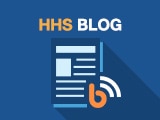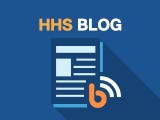From a Physician Assistant in Fairbanks to a Vending Machine in Interior Alaska: Witnessing Tribal Health Solutions Firsthand
A key piece to success in serving the American people involves going to them in person and hearing what is important in their lives. That was the reason that a large delegation from HHS recently made the trip to the interior of Alaska.
Our delegation visited with Alaska Native community leaders and families in Allakaket, Alatna, Hughes, Koyukuk, Manley, Tanana, Rampart, and Fairbanks. Through community meetings and tours of healthcare facilities, we heard about everything from the latest in Telehealth technology and medicine “vending machines” to Head Start and eldercare and the continuing challenges of clean drinking water and waste disposal.
In addition to helping to enhance HHS’s understanding of the challenges faced by remote tribal communities, the tour informed our meeting with the Secretary’s Tribal Advisory Committee (STAC), which convened in Fairbanks on September 24 and 25.

I want to thank Tohono O’odham Nation Tribal leader Chester Antone, chairman of the STAC, and all STAC members for joining us in Fairbanks, and thank Tanana Chiefs Conference (TCC) Victor Joseph, TCC Chief/Chairman, for hosting the HHS delegation from HHS on our tour of interior Alaska.
During our community visits, it became abundantly clear that the quality of care offered in Alaska Native health facilities should be a point of pride for everyone involved in tribal health. Alaska Native healthcare providers build on the strengths of tribal culture, customs and community to deliver an impressive whole-of-person approach to care. Patient needs, community providers, and community leaders are driving the delivery of quality healthcare.
Providing care in rural and remote areas is a challenge—one of the most significant problems American healthcare faces. The challenges are especially substantial in Alaska, America’s most sparsely populated state, and in other parts of Indian Country. In Alaska, we got to see a homegrown solution to these challenges, the Alaska Community Health Aide Program. Community health aides provide access to primary care, preventive services, urgent care and emergency response 24/7, 365 days a year in the most rural and remote areas of Alaska.
We saw this work in action in Hughes, a community so remote that, as some villages we visited, when you search for directions online, the result is: “We can’t find directions for this journey.” In Hughes, our delegation observed a community health aide use an online diagnostic tool to examine a patient with a rash and then consult with a physician assistant and a pharmacist in Fairbanks, about 250 miles away, on treatment approaches through a two-way internet connection. Medicine to treat the rash was then prescribed in Fairbanks and dispensed through a “vending machine” in the Hughes clinic.

Thanks to the advanced systems that Alaska Native communities employ, patient health care information can be instantly transmitted through a shared electronic medical record, telehealth connections, and telephone—no travel needed.

Two days later, our delegation visited the Chief Andrew Isaac Health Center in Fairbanks where we witnessed, from the other side of the telehealth connection, the follow-up visit with the patient and community health aide in Hughes.

We shared this model of care with the STAC members as an approach one community has developed to providing care in rural and remote locations.
We also took advantage of our time in Alaska to announce $50 million in new grants to tribes across the nation, through the new Tribal Opioid Response program, to support treatment, prevention, and recovery efforts that combat the opioid crisis.
Thanks to insights gained in consultation with tribal leaders, these funds were distributed by formula, which allows these dollars to go to the broadest possible set of tribes.
While we were in Fairbanks, we informed leadership from the Fairbanks Native Association and Tanana Chiefs Conference that they would be receiving new grants from the Substance Abuse and Mental Health Services Administration at HHS.
These community and tribal organizations will be receiving three new awards, totaling $6.2 million over the next few years, to address the opioids epidemic and provide mental health services to youth and young adults.
The trip to Alaska was a significant opportunity to hear about the challenges that rural and tribal communities face in obtaining access to health care, especially when it comes to mental health and substance abuse. Moreover, it was an excellent chance to see solutions to these challenges and highlighted the good work in these communities.
I am grateful to the tribal and village leaders and the many community members who took the time to welcome us into your meeting halls and homes to engage in a dialogue so our HHS team can take back what we learned to Washington.
Never Miss a Flu Vaccine. Here Are the Reasons #WhyIFightFlu
Self-Sufficiency by Tackling Health and Financial Stability


